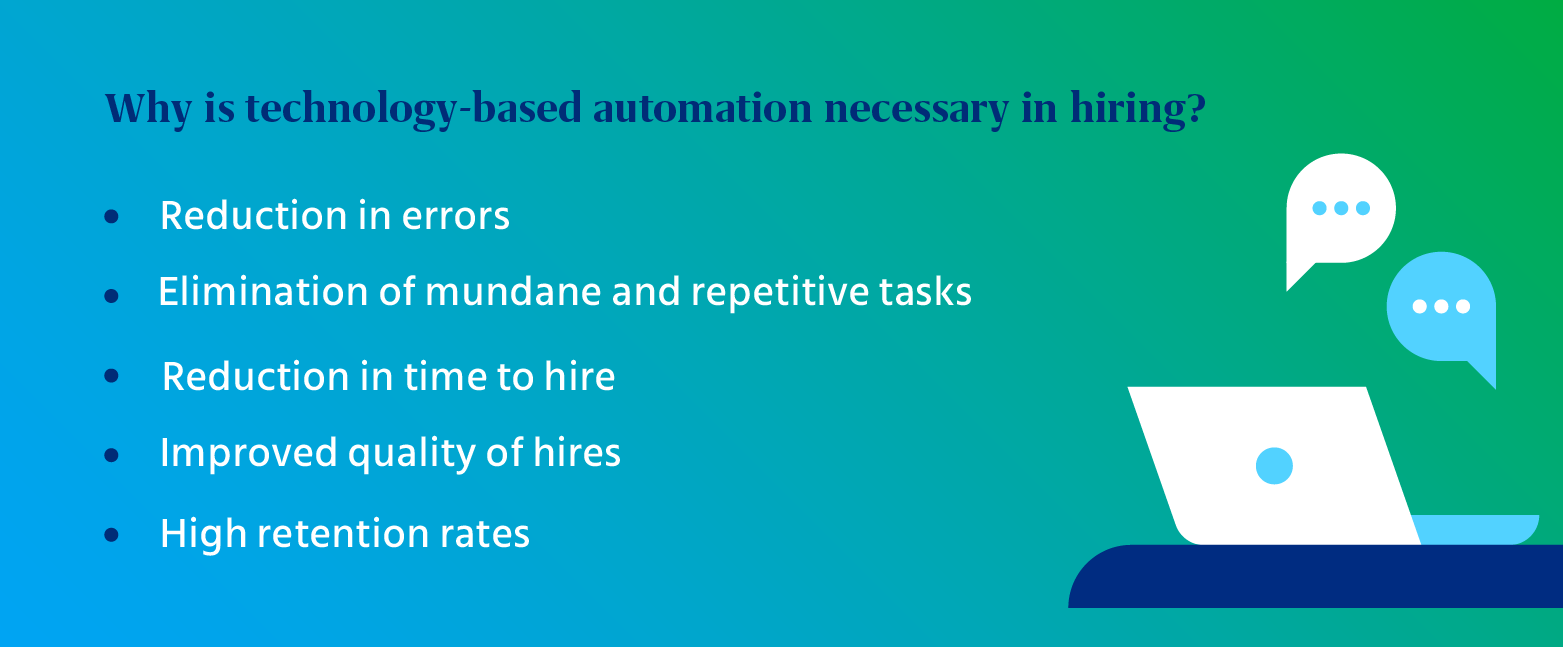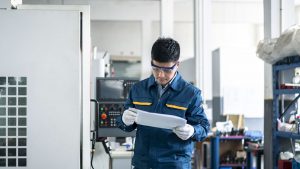Workplace automation means automating processes requiring small or zero human intervention for repetitive tasks. Many pre-programmed software applications and machines help automate workplace and hiring processes. For instance, applicant tracking software (ATS) can track recruitment activities through a single pane and generate reports within seconds.
Leveraging workplace automation technology provides the following benefits:

Reduction in errors
Humans are prone to making mistakes out of fatigue, lack of concentration, leniency, and other factors.
Based on data published by Smartsheet, 66% of respondents cited that automation is key to reducing workplace errors.
Workplace automation use software and pre-programmed machines for repetitive and error-prone activities. Since machines are immune to real-life disruptions, automation helps reduce errors in hiring.
For example, a hiring software or ATS tool sorting through candidates’ applications can accurately check all the required skills on the resume in minutes. Any HR professional achieving the same task can get exhausted and make errors while scanning multiple applications.
Elimination of mundane and repetitive tasks
Automation in hiring eliminates mundane and repetitive tasks, leaving time for strategic roles.
According to the article by Wall Street Journal, Amazon deployed automated robots in its warehouse to transfer shelving units, saving 20 miles of walking every day for human labor. It is now possible to scan and shelve 300 units per day compared to 100 units per day before the deployment of robots.
Similarly, workplace automation eliminates repetitive and mundane tasks in hiring. For example, tracking and sorting relevant applications, sending out initial assessment links, and manually evaluating the cut-off of assessment marks. Automation via intelligent machines and software can help eliminate these activities, saving significant time and effort.
Reduction in time to hire
Using workplace automation for hiring helps eliminate time-consuming processes, like reviewing resumes and initial candidate screening. Usually, the first few stages of recruitment consume multiple weeks because the HR team needs to sort through applications and reach out to candidates manually. However, with hiring automation, the entire process is reduced to days.
According to SHRM Customized Talent Acquisition Benchmarking Report, the average time needed to hire a candidate is 36 days.
Hiring automation helps expedite hiring stages like job posting approval, screening, initial assessment, acceptance offer dispatch, etc. This reduces the time to hire, which also decreases the costs of hiring.
Improved quality of hires
Businesses need to attract diverse people from various fields to improve workplace efficiency. However, with manual application screening, some unknown bias is always present. It is likely for an HR to reject a resume solely based on the college they attended. An automated system for hiring may not make this mistake and judge candidates based solely on merits, experiences, and specific job requirements.
Automated assessments or interviews provide a method to gauge on-the-job skills without bias. For example, Mercer | Mettl’s technical tests offer assessments for several job roles in different industries. Companies can evaluate candidates’ technical and job-focused skills using caselets, MCQs, coding simulators, etc.
Hiring automation provides high-quality hires because the process focuses on assessing candidates’ skills and competencies. Repetitive tasks and time-consuming activities are automated, which allows HR managers to focus on personal interviews and strategic evaluations.
Using automation through assessments and other tools throughout the hiring process also helps reduce bad hires. Candidates are carefully screened by ATS or another tool in the first stage, and then assessments help gauge candidates’ interpersonal, leadership, technical, and coding skills.
High retention rates
With the quality of hire, retention rates also improve. Since candidates hired for different job roles fit business requirements, they are experienced in handling different workplace situations. As a result, better efficiency, which, when paired with an appropriate recognition and reward system, improves overall retention within the company.









 Behavioral Competencies
Behavioral Competencies Cognitive Competencies
Cognitive Competencies Coding Competencies
Coding Competencies Domain Competencies
Domain Competencies


































Would you like to comment?